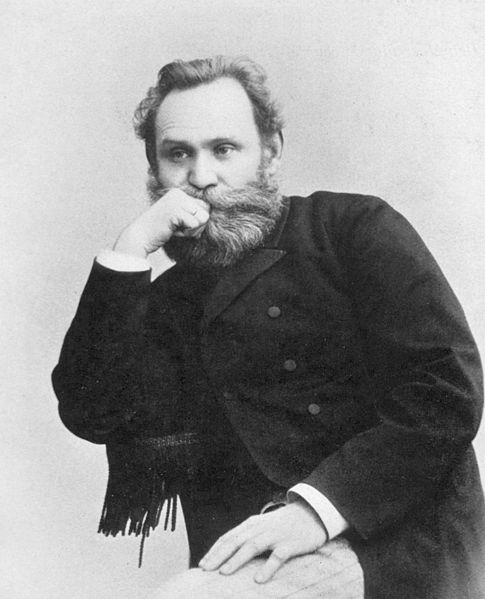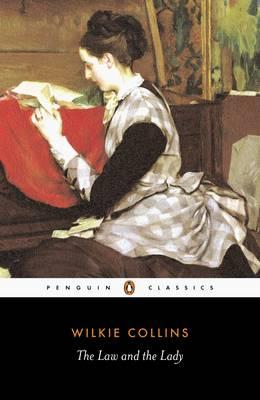Within the Alienist books, we are introduced to a wide variety of unusual characters. As Stevie Taggert, Dr. Kreizler’s ward, tells readers in The Angel of Darkness, “It’s always seemed to me that there’s two types of people in this life, them what get a kick out of what might be called your odder types and them what don’t; and I suppose that I, unlike Mr. Moore, have always been in the first bunch. You’d have to’ve been, I think, to have really enjoyed living in Dr. Kreizler’s house…” (AoD 97). Indeed, one of the more endearing of these eccentric characters is introduced in The Angel of Darkness by Stevie when the team require the assistance of a scenting animal to help locate an abducted baby, Ana Linares, in the home of their primary suspect. Known to readers only as ‘Hickie the Hun’, this old friend of Stevie’s is a petty criminal with a trademark lisp and a soft spot for animals. Among the menagerie of animals that Hickie keeps in his basement home on the Lower East Side is a ferret named Mike who has been trained to assist Hickie in his robberies. Entertaining though Hickie is as a character, it is the youth’s “homegrown methods of animal training” that make the strongest impression on Dr. Kreizler when the streetwise orphan drops the ferret off at the Doctor’s house.
The Angel of Darkness, 211-2:
“It’s really rather remarkable,” the Doctor said, after Hickie’d made his good-byes to Mike in my room and then headed back downtown. “Do you know, Stevie, there is a brilliant Russian physiologist and psychologist—Pavlov is his name—whom I met during my trip to St. Petersburg. He is working along similar lines to this ‘Hickie’—the causes of animal behaviour. I believe he would benefit greatly from a conversation with your friend.”
“Not likely,” I answered. “Hickie don’t much like leaving the old neighborhood, even on jobs—and I don’t think he can read or write.”
Chuckling a bit, the Doctor put an arm on my shoulder. “I was,” he said, “speaking rather hypothetically, Stevie…”
Hypothetically, what would Pavlov have thought of Hickie’s homespun brand of ‘behaviorism’ if he’d had a chance to learn of it? With my own background in psychology, I have decided to spend some time in the 17th Street history blogs over the next few months on the real history of the discipline as included in the Alienist books. In this month’s history blog, we will start by overviewing the work of the famous Russian physiologist, Ivan Pavlov, whose work with salivating dogs nearly everybody is at least partially familiar with, in order to examine, first, how Dr. Kreizler may have known him, and second, how his work ties into Hickie’s animal training methods. In order to fully address the second of these questions, however, we will need to expand beyond Pavlov into the broader realm of ‘behaviorism’ as a branch of psychology at the turn of the century. However, before we get ahead of ourselves, let’s start back at the beginning with Pavlov.
Who was Ivan Petrovitch Pavlov?
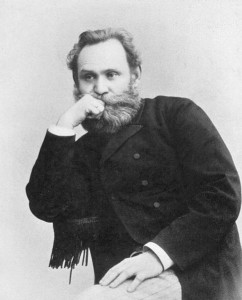
Although best known for his work on salivary and “psychic” reflexes, Pavlov focused his research for the first ten years of his career on innervation mechanisms of the cardiovascular and digestive systems. Initially, Pavlov stayed in St. Petersburg where he studied reflex constriction of blood vessels and pancreatic secretion. Following this, he was awarded the Wylie Fellowship to study outside of Russia for two years: first with gastrointestinal physiologist Rudolf Heidenhain in Breslau (Wrocław), Poland, in 1884; and later with cardiovascular physiologist Carl Ludwig in Leipzig, Germany, in 1886. While working with Heidenhain, Pavlov improved the “Heidenhain pouch”, developing the “Pavlov pouch” which allowed far more accurate measurements of stomach secretions to be obtained than with the Heidenhain pouch due to the preservation of the vagal nerves which were severed in the Heidenhain pouch. Upon returning to St. Petersburg, Pavlov resumed cardiovascular research until he made the decision to focus exclusively on the salivary reflex and digestive secretion from 1888 onwards.
Through Pavlov’s innovative surgical procedures, including the Pavlov pouch and fistulas that created minimal interference with an animal’s day to day life, Pavlov’s digestive secretion research was the first to provide accurate measurements of digestive secretions and salivary responses, and he would go on to win the Nobel Prize in 1904 for his work in the field. However, it was only in his acceptance speech for the Nobel Prize that he first indicated that these innovative methods, which allowed him to conduct his research on awake rather than anaesthetised animals, had led to an additional discovery that he would go on to investigate for the remainder of his career:
There is the reflex evoked by stimulation of the oral cavity; it is physiological, constant, and unconditioned. Then there is the reflex evoked by stimulation of receptors on other parts of the body surface; it is permanently subject to fluctuation and is, therefore, conditioned … Any phenomenon of the external world can be made a temporary signal of the object which stimulates the salivary glands, provided the stimulation of the mucous membrane of the mouth by the object has been associated once or more times with the action of the given external phenomenon on other receptor areas of the surface of the body.
In essence, Pavlov had discovered that while certain stimuli (e.g., meat powder) elicit an unconditioned reflexive response from the autonomic nervous system (e.g., saliva production), neutral stimuli (e.g., the footsteps of a researcher approaching an animal) could elicit a conditioned response that was highly similar to the unconditioned response provided the neutral stimulus (which he would go on to call the conditioned stimulus) had been paired a number of times in the past with the unconditioned stimulus. Pavlov was not the first to observe that such a phenomenon takes place — there are mentions in physiology textbooks as early as the mid-eighteenth century that responses such as salivation could be prompted by stimuli that did not act directly on the oral cavity — but he would be the first to systematically study the phenomenon he called the “psychic reflex”.
For the duration of this research, Pavlov held the position as chief of physiology at the Imperial Institute of Experimental Medicine in St. Petersburg, which may help to explain how Dr. Kreizler would have been aware of his research given that no public mention of the discovery of the “psychic reflex” was made until Pavlov’s Noble Prize acceptance speech. As Dr. Kreizler’s original field of study was medicine, it seems reasonable to presume that any trip to Russia, and St. Petersburg in particular, wouldn’t have been complete for a scientifically curious doctor without a visit to the impressive and well-appointed Institute. Indeed, even prior to Pavlov’s receipt of the Noble Prize, his growing reputation as a leader in medical research drew numerous colleagues and pupils to St. Petersburg in the 1890s to work alongside the inspiring and respected physiologist. Thus, even though Dr. Kreizler’s field was not physiology, he may have still have been curious to visit Pavlov’s laboratory, presuming he made his visit to Russia at some stage during the early 1890s.
On a personal level, Pavlov was also just the sort of “odder type” that Dr. Kreizler seemed to enjoy having among his acquaintance. Gantt (1975), a contemporary of Pavlov’s, wrote that, “In everyday affairs outside the laboratory he was poorly adapted.” He had little interest in the material world, as the following recollection from the same contemporary describes (Gantt, 1975):
When at about age 50 his wife was bemoaning the fact that he did not get an appointment as full professor and a better salary, Pavlov, at that time interested in the development of the butterfly larva, exclaimed: “Do not bother me about such trifles, do you not see that my butterflies have died?” (due to the freezing temperature in the apartment).
However, as a scientist, he was second to none. The portals above his laboratory had the words “Observation and Observation” cut into the stone, a dictum Pavlov would live by for his entire life. While he would go on to develop an interest in psychiatry later in life, believing that conditioning may underlie many mental illnesses, he disliked psychology as it was instantiated in the nineteenth century due to its reliance on subjective explanations that resulted from the introspective methods commonly employed at the time. He didn’t consider the phenomena studied by psychologists to be unimportant, but he disliked that — at that point in time, at any rate — there was no way to study the phenomena scientifically through direct observation. So strong a believer was Pavlov in the power of observation that until half an hour before his death at the age of 86 in 1936, he was recording observations of his own behaviour.
By the time of his death, Pavlov had become a legendary figure in science. In addition to the Nobel Prize, he was the recipient of numerous awards and honours including being elected a member of the Royal Society (in Britain) and of the Imperial Academy of Science (in Russia) in 1907, being awarded an honorary D.Sc. from Cambridge University in 1912, and receiving the Copley Medal for investigations in biological science from the Royal Society in 1915. It was Pavlov’s reputation in the international scientific community that saved him during the Russian Revolution, despite his open opposition to Marxism for many years. In the 1920s, he exclaimed in a public lecture: “You call this a social experiment, but for this kind of experiment I would not sacrifice a frog’s hind leg!” A few years before his death, he started to express a change of heart. By 1933 he was saying that it was “too hard on his heart to get so angry”, and the government’s support of the sciences was also beginning to win him over. Nevertheless, as Gantt (1975) observed:
Never has there been in the whole list of heroes who have stood for the truth one who was more vehement and outspoken than Pavlov; and, paradoxically, against the most repressive and absolute dictatorship, he lived to die a natural death.
The Basic Phenomena of Pavlovian (Classical) Conditioning
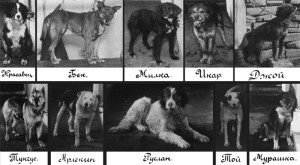
The learning of interest in this type of conditioning involves pairing the unconditioned stimulus with a conditioned stimulus. The conditioned stimulus typically needs to be something novel that an animal has had no prior exposure to (i.e., has not learned any response to previously), and is neutral, meaning that it does not automatically produce a response in the animal. For his research, Pavlov used a wide variety of conditioned stimuli including metronomes, tuning forks, and whistles. Through repeated pairings of the conditioned stimulus with the unconditioned stimulus, the animal gradually acquires a conditioned response to the conditioned stimulus that closely resembles the unconditioned response (e.g., salivation). In other words, the animal has learned to associate the two stimuli together and will respond similarly to both. This type of associative learning is generally extinguished (that is, it goes away) after repeated presentations of the conditioned stimulus without the unconditioned stimulus, but it can show spontaneous recovery under certain conditions. In addition to the basic phenomena, animals also show stimulus generalisation and stimulus discrimination: that is, they can learn to discriminate between two similar neutral stimuli and only respond to one, while they can also generalise their conditioned response to similar neutral stimuli if they have not been taught discrimination.
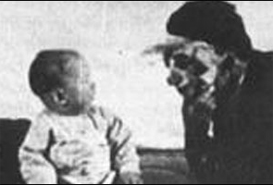
How Does Pavlovian Conditioning Relate To Hickie’s Training Methods?
Now that we understand the basic phenomena of Pavlovian conditioning, we can return to our original question regarding Hickie the Hun and his “homegrown methods of animal training.” So, how significant was Pavlovian conditioning for the method of training Hickie had developed? In order to answer this, let’s take a look at Stevie’s description of Hickie’s methodology:
The Angel of Darkness, 210:
Would Mike be able to detect if the person was in fact in the house, and find the right room? Indeed he would, Hickie said; in fact, it would be a breeze, compared to some of the jobs Mike’d handled in the past. Then I asked about the training, and was surprised to learn how simple it would be: all I’d need would be a piece of clothing from the person I was looking for, the more intimate the better, as it would be that much more steeped in the person’s scent. Mike was already so well trained that when he began to connect a particular object or smell with his feeding, he quickly got the idea that he was supposed to find something that looked or smelled the same; only a couple of days would be needed to get him ready.
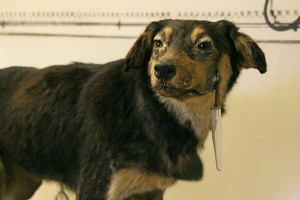
In 1898, the foundation of a different kind of conditioning was laid with the publication of Edward Lee Thorndike’s doctoral dissertation into animal learning. Even though Thorndike would not be destined to become a household name like his Russian counterpart, thanks to the revolutionary approach he took to studying animal learning, his work took the field of psychology by storm at the turn of the century. Within the year, the New York Academy of Sciences would invite him to talk about his results at their January meeting; the prestigious generalist journal Science would publish a paper he wrote on his work in June; his complete dissertation would appear as a monograph supplement in the equally prestigious specialist journal Psychological Review; and the American Psychological Association would invite him to present at their annual meeting in December.
To Be Continued
As a result, Part Two of the Hickie the Hun’s Homespun Behaviorism blog series will describe Thorndike’s work on animal learning in further detail in order to explain its connections to Hickie’s training methods, and why its implications were so significant to the field of psychology and to the branch of psychology that John B. Watson would popularise as ‘behaviorism’ in particular.
Sources
- Cover, M. C. (1924). A laboratory study of fear: The case of Peter. Pedagogical Seminary, 31(1), 308-315.
- Gantt, W. H. (1973). Reminisences of Pavlov. Journal of the Experimental Analysis of Behavior, 20(1), 131-136.
- Hill, A. V. (1936). A tribute to Pavlov. Science, 83(2154), 351-353.
- Hunt, M. (2007). The Story of Psychology. New York, USA: Anchor Books.
- Lilienfeld, S. O., et al. (2012). Psychology: From Inquiry to Understanding. New South Wales, Australia: Pearson Australia.
- Rosenzweig, M. R. (1959). Salivary conditioning before Pavlov. The American Journal of Psychology, 72(4), 628-633.
- T., W. H. (1916). Prof. Ivan Petrovitch Pavlov. Nature, 97(2418), 9-11.
- Tully, T. (2003). Pavlov’s dogs. Current Biology, 13(4), R117-R119.
- Watson, J. B., & Rayner, R. (1920). Conditioned emotional reactions. Journal of Experimental Psychology, 3(1), 1-14.

